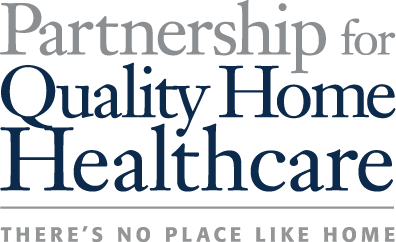October 31, 2022
Home Health Community Voices Alarm for Deep 7.85% Cut Included in CY 2023 Home Health Prospective Payment System Final Rule
Posted in: Press Release
Washington, DC – The Partnership for Quality Home Healthcare (the Partnership) is alarmed and deeply disappointed by the inclusion of a permanent 7.85% cut to Medicare home health services in the Home Health Prospective Payment System (HHPPS) Final Rule for Calendar Year (CY) 2023. Originally, the cut included in the proposed rule would have reached an alarming $18 billion over the next ten years when combined with other cuts forecasted by CMS—but because the permanent rate cut in the final rule is larger than what was initially proposed, the cuts over the next 10 years will be even more serious. While the Final Rule institutes a short term phase-in by instituting a 3.925% payment reduction for CY 2023, it does nothing to mitigate the effect of the underlying permanent cut of 7.85% overall. Consequently, it will result in detrimental, long-term repercussions for home health patients and their providers.
“This rule offers the tactic of relief for CY 2023, but this short-term acknowledgement that home health cannot withstand devastating cuts does nothing to address the long-term impacts that the Final Rule’s 7.85% permanent reduction to home health payments will have on the stability of the Medicare home health program and services to senior citizens. This 7.85% cut is worse than initially proposed and when fully implemented in 2024, will result in an immediate decline in access to home health. This will have negative effects on the availability of care for the most chronically ill of the Medicare population and result in access to care problems. While this short-term phase-in blunts the immediate impact, the long-term consequences of this rule, unless mitigated, will devastate access to care in the home,” said Joanne Cunningham, CEO of the Partnership.
The Home Health Prospective Payment System Final Rule for CY 2023 includes a severe permanent 7.85% payment cut for the home health payment rates based on a significantly flawed methodology for calculating home health payment adjustments. CMS also plans to apply additional “clawback cuts” of more than $2 billion for services provided to patients during the COVID-19 pandemic. The Partnership, along with industry experts and others, presented a data analysis on the new payment model in meetings and discussions over the past year that demonstrated the technical flaws in CMS’ approach. Unfortunately, CMS chose to move forward with the permanent cut despite opposition from patients, providers, and lawmakers.
The Partnership had previously cautioned CMS in their comments to the agency that the proposed permanent and temporary cuts violate the statute, writing, “CMS’ Proposed Rule violates three separate statutory commands: The proposal ignores the statutory provision it purports to be implementing by failing to correct its assumptions about how home health agencies would change behaviors in response to the new payment system. It also violates the statute’s budget-neutrality command by reducing overall aggregate expenditures. Third, it uses therapy thresholds to determine payment despite the statute’s mandate to eliminate this practice.”
Recognizing the dire impacts that massive long-term cuts will have on home health providers and the patients they serve, Congress has introduced a bipartisan bill intended to help protect Medicare seniors and disabled persons’ access to care. The Preserving Access to Home Health Act of 2022 (S. 4605/H.R. 8581), introduced by Senators Debbie Stabenow (D-MI) and Susan Collins (R-ME) and Representatives Terri Sewell (D-AL) and Vern Buchanan (R-FL), would prevent massive cuts from taking effect in the Medicare home health program until 2026, allowing time for CMS to work with the home health sector to fix their flawed methodology in Medicare rate changes.
“We applaud the bipartisan sponsors of this legislation for their leadership and continued support for home health,” continued Cunningham.
The Partnership will continue to review and analyze the Final Rule to fully understand its impacts on patient access and care.
####
